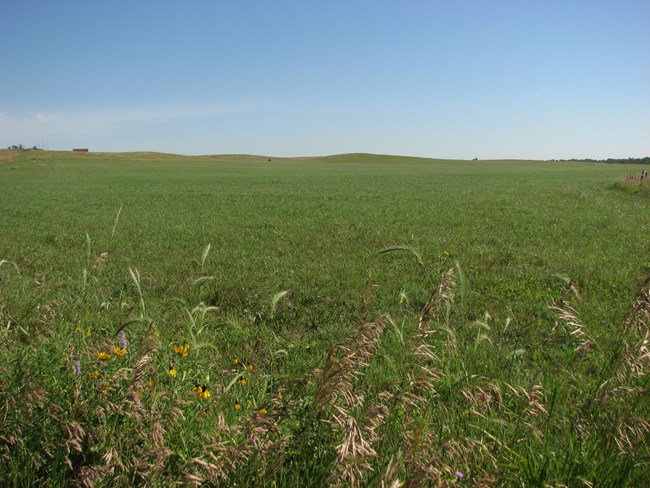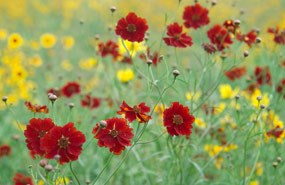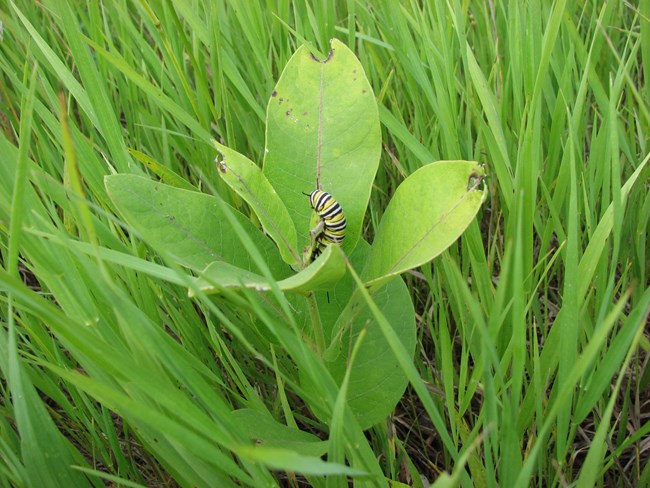Select a Park:Select a Species Category (optional):
Search results will be displayed here.

KNRI Staff The Original PrairieWhen the Lewis and Clark Expedition arrived at the Knife River, they found a plant community that was much different than visitors will see today. 
The Prairie TodayToday, despite clearcutting, farming, and grazing, the park contains remnants of native vegetative communities that are some of the best in the outlying areas. Specifically, lower terraces contain an over-story of cottonwood, peach leaved willow, green ash, box elder and american elm. The FloodplainPortions of both the floodplain and upper terrace are in different stages of succession. Some have been planted with artificial mixtures of native grasses and have achieved some measure of successful fruition. However, larger sections of the floodplain, which in an undisturbed situation would have been forested, are presently dominated by Smooth Brome grasses and other exotic plants as a result of the clearing of trees by Native Americans and Euro-Americans. 
KNRI Staff Kasha Exotic PlantsMany exotic plants exist in the park. Some of these were deliberately introduced to the area and others arrived by accident. The removal of many of these nonnative plants such as Leafy Spurge, Canada Thistle, and Sweet Clover is an ongoing battle for the park’s staff. |
Last updated: June 14, 2020
